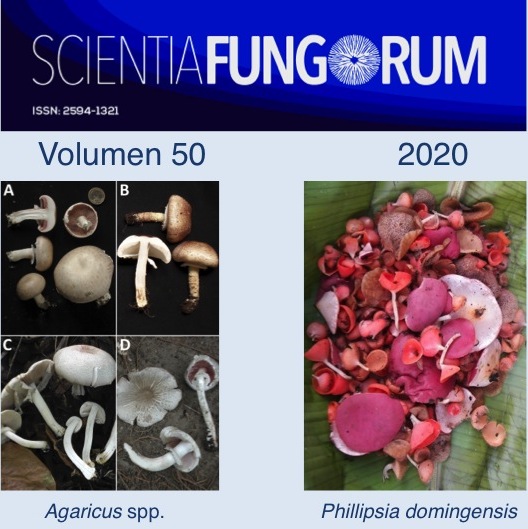Diversity of soil culturable fungi in the tropical montane cloud forest of Veracruz, Mexico
DOI:
https://doi.org/10.33885/sf.2020.50.1290Abstract
Background: Cloud forest is one of the most threatened ecosystems in the world and more than half of its original area has been transformed for other land uses. Consequently, macro- and microorganisms of this ecosystem have likely undergone changes.
Objective: To analyze the diversity of saprobic filamentous soil cultured fungi in four cloud forest fragments and evaluate the similarity in species composition among fragments.
Methods: To detect and isolate soil microfungi, the soil particle filtration technique was used. Emerging colonies were transferred to a culture medium for subsequent quantification and identification. For each species, permanent and semi-permanent slide preparations were made, and taxonomic identification was performed based on morphological features.
Results and conclusions: From 20 soil samples and 2000 inoculated particles, 233 species were distinguished. The most common species were Myrmecridium schulzeri, Pestalotiopsis maculans, Trichoderma atroviride, Virgaria nigra, Trichoderma cremeum, Fusarium solani, Cordana terrestris, Aspergillus fischeri, and Penicillium olsoni. The most abundant species were Talaromyces flavus and Pestalotiopsis maculans. All the forest fragments had a high richness, diversity, and evenness in addition to a high turnover and high number of exclusive species.
Downloads
Downloads
Published
How to Cite
Issue
Section
License
Copyright notice
Open access policy
The authors who publish in this journal accept the following conditions:
In accordance with copyright laws, Scientia Fungorum recognizes and respects the authors’ moral rights, as well as the ownership of property rights, which will be transferred to the journal for dissemination in open access. Scientia Fungorum does not charge for submission and processing of articles for publication.
All the texts published by Scientia Fungorum –with no exception– are distributed under a Creative Commons License Attribution-NonCommercial-ShareAlike 4.0 International (CC BY-NC-SA 4.0), which allows third parties to use the publication as long as the work’s authorship and its first publication in this journal are mentioned.
The authors can enter into independent and additional contractual agreements for the nonexclusive distribution of the version of the article published in Scientia Fungorum (for example include it into an institutional repository or publish it in a book) as long as it is clearly and explicitly indicated that the work was published for the first time in Scientia Fungorum.
For all the above, the authors shall send the form of Letter-transfer of Property Rights for the first publication duly filled in and signed by the author(s). This form must be sent as a complementary file.
This work is licensed under a Creative Commons Attribution-NonCommercial-ShareAlike 4.0 International license (CC-By-NC-SA 4.0).



